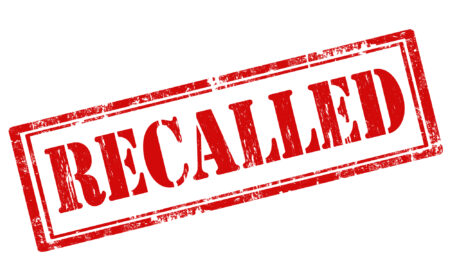Over the past few years, we’ve witnessed a shift in the healthcare supply chain industry regarding the importance placed on data analytics – not only for cutting costs and boosting revenue, but also for increasing efficiency and clinician satisfaction, as well as improving patient care and safety. Although it’s widely known that data is essential for effectively managing clinical inventories and ensuring that the supply chain works properly, it’s typically been either unavailable, unreliable or inaccurate – particularly within the procedural environments at hospitals (Perioperative/OR, Cath/EP, Interventional Radiology, Endoscopy/GI).
Accurate, accessible and dependable data is needed for both day-to-day inventory operations (e.g., reordering, product availability, expiration tracking, recall management) AND more strategic decision-making (e.g., forecasting supply needs, standardizing product usage based on best outcomes and value, optimizing supplier-partner relationships with consolidation and consignment programs).
There are practical and proven methods for capturing, analyzing and utilizing this data in order to gain control of and optimize clinical inventories at hospitals. With these methods, users have critical operational data at their fingertips, such as how many days of on-hand inventory they have, what their burn rate is, and how much safety stock is needed, as well as which specific supplies they need to reorder.
This data is also critical for longer-term planning and risk mitigation, which shows users what they can cut from purchasing if they need to redirect dollars elsewhere, and how to forecast resource needs based on anticipated procedure volumes. It also enables them to track recalled products to patients instantly, ensure the availability of desired products, and prevent expired products from being placed in patients.
(For a full report on the importance of data analytics, check out our White Paper)
The Power of RAIN RFID for Automatically Capturing Data
At VUEMED we’ve found that solutions that combine automated RAIN RFID (GS1 UHF Gen2) technology with actionable KPIs and Cloud analytics are the most effective for improving hospitals’ clinical inventory and supply chain management, enabling such achievements as:
(1) Reduction of purchases and waste;
(2) Optimization of inventory size and composition;
(3) Elimination of unnecessary product variation;
(4) Assurance of product availability;
(5) Provision of accurate charge capture and patient records; and
(6) Improvement in patient safety through effective recall and expiration management.
The adoption of solutions that AUTOMATE the capturing of data is essential because it ensures the consistent identification and accurate tracking of all devices and supplies throughout their life cycle, from point of manufacturing all the way to point of care, leading to these transformative changes. RAIN RFID technology is particularly good at capturing data and managing clinical inventory precisely because it’s automated and hands-free, without the need for human intervention or special cabinetry. Plus, it turns any area – whether a supply room, procedure room, or warehouse – into a fully controlled inventory space, using strategically placed zonal and steerable antennas installed in the ceilings.
With RAIN RFID technology, such as our VueTrack-RF™ solution, the complete lifecycle of each SKU is documented and reported continuously and in real time with 99.5% accuracy, and a perpetual inventory status is maintained for each item tracked, down to its lot/serial number and expiration date. This technology captures swiftly and accurately all Unique Device Identification (UDI) and other relevant data, and transmits key information to the appropriate hospital systems.
(For an analysis of RAIN RFID and UDI, see our White Paper on this topic)
The Power of the Cloud for Analyzing and Reporting Key Data
All inventory transactions captured this way are then recorded and analyzed securely and in real time in the Cloud, where information is reported in aggregate by SKU and by location (at the IDN or hospital level, and location within the hospital, such as department, floor or room). The Cloud application also supports any relevant interfaces with clinical documentation and billing systems to enable accurate patient records and full charge capture. This data can easily be shared between hospital departments, among hospital personnel (clinicians, materials management, supply chain, risk management, etc.), between the hospital and its IDN, and between hospitals and suppliers. Hospital and department-specific data for each SKU, such as price, par levels, consignment status, item number and billing code, are maintained and accessible in the Cloud.
Real-time, web-based reports give users immediate access to important data, such as stagnating items, par level adjustment recommendations, expiration tracking, recalled items, items in need of reordering, and physician utilization, to name just a few. The intrinsic advantage of the Cloud lies in its ability to store, compute, analyze and report tremendous amounts of data with easy user access, and to help turn data into actionable information. A variety of thematic reports with real-time data are instantly available through the Cloud, which empower users by giving them full visibility of their inventory.
Here are some examples of the types of reports that users can run:
- Inventory Review: On-hand inventory, consumed inventory
- SKU Status: Under par, expiring, unused, new items
- Clinical Usage Analysis: Case summary & details, physician comparisons
- Orders: Creating and managing requisitions & receipts
- Transactions: Add, remove, transfer, consume
- Item Data Management: Par levels, pricing, consignment, critical item designation
- Cross department and cross facility comparisons
- Advanced reports, such as trend forecasting, are available through Tableau
The data stays up-to-date, allowing users to come back to analytics reports quarterly, monthly, or even daily to see how trends progress over time. VUEMED offers the advantage of a closed data generating and sharing system, which captures the data, manages it, reports on it, and analyzes it.
The Power of Data Analytics for Creating Change
The analytics step is where the power and capability of the data is on full display, and where the real change happens. Smart Key Performance Indicators (KPIs) – such as those tracking expiring or expired inventory, stagnating or unused items, and consumed vs. purchased inventory – provide hospitals with the data visibility needed to guide and achieve inventory optimization as well as alignment with clinical needs, while also preventing waste and unnecessary spending.
(For more insight into the importance of smart KPIs, check out our White Paper)
The availability of accurate consumption and inventory data also gives users the ability to be more proactive about anticipating and managing their supply resources. There are two ways that VUEMED approaches forecasting:
- Consumption and Minimum Par Level Forecasting Model: Uses past consumption history to forecast minimum par level requirements going forward, while taking into account each item’s usage history, order lead times, and EOQ (ordering costs and inventory holding costs) when available.
- Procedure-Based Demand Planning Model: uses scheduled or anticipated types of cases and the associated supplies and implants that would be required for each type of case, based on prior consumption history.
Conclusion
Accurate, reliable and automated data capture – from point of entry in the facility to point of care in a patient procedure – is, without a doubt, the most essential piece of the healthcare supply chain data puzzle. Such data not only enables hospitals to control and optimize their clinical inventory, but also feeds KPI programs that monitor performance, measure savings, and guide improvement opportunities.
Information truly IS power – the power to analyze and decide, the power to make changes and adapt, the power to succeed and excel.





